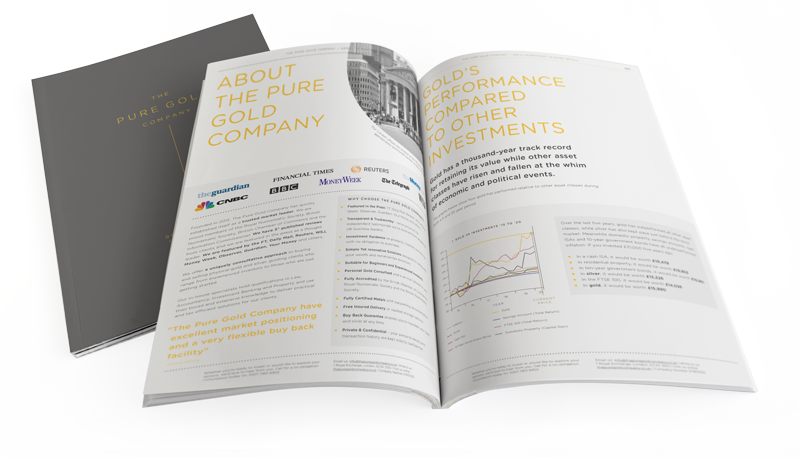By Josh Saul
Trump’s election surprised the world, and the markets acted accordingly. In an echo of the Brexit result in June, the day following the election the dollar and stock markets fell. However, gold prices rose, seeming to confirm that a sense of uncertainty lends itself to gold gaining strength. To many, Trump’s economic plans seem sketchy at best, however his talks of economic stimulus, according to sources such as the Financial Times, have led to ‘bets on inflation and higher growth’, and after an initial lurch markets have recovered.
Ups and downs
In the immediate aftermath of the US election results, gold prices saw unprecedented highs. However, that situation has changed, with many commentators attributing the Indian Prime Minister Narendra Modi’s actions in banning large denomination rupee notes as one of the reasons why the gold price has fallen back to previous levels.
Large denomination notes were traditionally used by India’s black economy to convert black money into white money through the purchase of gold – a situation creating a lot of demand for physical gold. With the large notes used to do this no longer in circulation, global demand for physical gold has decreased enough for its value to fall. ‘Now that large bills used to buy gold are worthless, demand for physical gold will decline’, suggest analysts at MarketWatch.
However, the real significance of this for precious metal investment isn’t yet understood, and demand for physical gold tends to recover quickly whenever prices fall. Furthermore President Elect Trump is saying what he knows the market wants to hear which is positively affecting equities and the dollar thereby resulting in a dip in the gold price. However a chunk of the market haven’t yet appreciated the inconsistency between what Trump says and what Trump does. In fact – very much like the relationship between the dollar and gold there seem to be an inverse correlation.
The Midas touch?
Donald Trump himself appreciates precious metals. The photographs of the gold decor of his lift flashed across the world during the first weekend following the election results, and Trump is a known investor in physical gold. A recent article in The Guardian revealed that ‘he owns between $100,000 and $200,000 of gold’, in the form of gold bullion, according to a statement made to the Federal Election Commission. He received the bullion in 2011 in lieu of a cheque deposit from Michael Haynes, CEO of the precious metals dealers AMPEX.
But what do his actual policies mean for gold investors? A common criticism of Trump has been his lack of a clear, detailed fiscal policy that might help with these analyses. However, US inflation rates are predicted to rise as a result of Trump’s election, and gold is often viewed as an attractive ‘inflation hedge’. On the other hand, ‘Trump’s proposed policies are causing turmoil in emerging markets and higher inflation could prompt the Federal Reserve to accelerate the pace of rate hikes’, said a spokesman from Credit Suisse, and accelerating the increase in federal reserve rates could cause gold prices to fall.
When it comes to interest rates, however, again the story is more complicated. If interest rates were to be hiked prematurely and GDP were to decrease as a result of increased household costs of mortgages and borrowed money (as was the case in November 2015), this would be seen as a positive sign for gold investment. With the variety of possibilities it can be seen that any definite claim that gold will go up or down due to rate hikes is either speculation or popular belief, rather than based on a real and observable correlation.
Another point likely to be forgotten by now is that as early as January Trump ‘opened the door to wider currency wars against America’s main trading partners if he is elected president’, which could involve driving down the dollar, which means good news for gold prices, with Investing.com suggesting that ‘dollar weakness usually benefits gold, as it boosts the metal’s appeal as an alternative asset and makes dollar-priced commodities cheaper for holders of other currencies’.
With all these contradictory suggestions it is too early to speculate on the long term impact on what Trump’s presidency means for investors in gold.
Gold protecting against uncertainty
Despite the ready offering of predictions of either a bold new America or apocalyptic gloom, no one really knows what lies ahead of this remarkable election. The dollar might soar, but this isn’t necessarily good for the the global economy. (An investment analyst for the Financial Post recently went as far to say, ‘a stronger dollar could be stronger than the world can handle’.) We just don’t know what lies ahead – and this precisely what makes investing in gold an attractive option for a wide variety of potential investors.
Elsewhere in the world uncertainty is developing independently of the American political sphere. Italy is in danger of withdrawing from the Euro as eight major banks risk collapsing if the country’s upcoming constitutional referendum votes ‘no’. Household debts in the UK are now the highest they’ve been since 2005, and if Trump raises interest rates as he’s indicated this will increase the cost of these debts, leading to potential defaults and house repossessions.
As a result of this uncertainty markets across the globe are still jittery. However, those investing in gold are not typically thinking about the here and now. Protecting assets against unrest that would threaten other forms of capital in the future, perhaps in terms of decades, is what investing in gold is all about. In addition, gold prices are currently 11% lower than they were in October, which makes gold a strong buying opportunity in the face of looming volatility and uncertainty. When the world’s unsure, having a physical investment, always in high demand and easy to liquidate, can only be a sensible option, and this means that those looking to invest in gold should look at recent events in a positive light.


